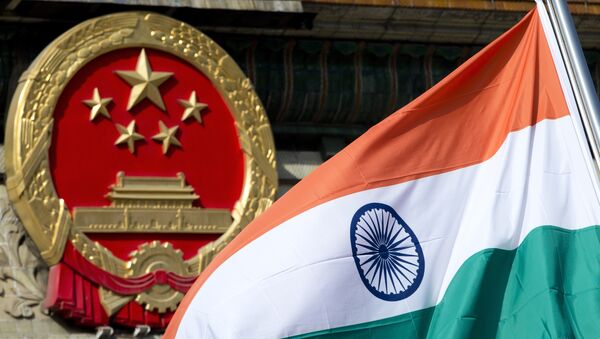The Indian government recently implemented its new Goods and Services Tax (GST), marking the country's largest tax reform since its independence in 1947. The launch of the new tax regime is aimed at simplifying India's complicated central and state tax system, unifying India's $2 trillion economy and 1.3 billion people into a single market.
While there is a lot of skepticism toward India's market unification reform, foreign companies appear to be confident about their prospects in the country. As part of the latest tax reform, India imposed a 10 percent duty on imported smartphones and some other electronic products, which has incentivized global smartphone manufacturers to accelerate their plans to set up plants in India. According to media reports, Foxconn plans to invest up to $5 billion in building new factories in the country. In June, Samsung announced it would invest 700 billion won ($608.28 million) to expand its production capacity in India, with monthly output expected to reach 10 million smartphones and 200,000 refrigerators by 2018.
Chinese mobile phone manufacturers are also investing in India. Brands like OPPO, Vivo, Lenovo and Xiaomi have set up plants in India, intensifying competition in the country's smartphone manufacturing sector. As early as four years ago, China's mobile phone industry, including brands, original equipment manufacturers, part suppliers, packaging suppliers and materials suppliers, started to enter the Indian market. In addition to smartphones, Chinese home appliances manufacturer Midea Group also announced recently that it would invest 800 crore ($123.98 million) to set up a factory in Pune, a city in western India. The factory is expected to be operational by the end of 2018 and aims to generate 500 jobs over the next five years.
The global auto industry is also eyeing India. Tesla CEO Elon Musk has said Tesla is having talks with the Indian government to seek temporary relief from import duties ahead of establishing a local factory. A 60 to 100 percent duty is charged on imported foreign-made cars in India. In June, Chinese automaker SAIC Motor Corp announced plans to become the first Chinese auto company to build a manufacturing facility in India. During the period from 1995 to 2000, Hyundai, Ford, General Motors, Honda, Toyota and other automakers started to produce cars in India. And since the Indian government allowed 100 percent foreign ownership in the automobile industry in 2000, there has been a sharp increase in investment by automakers in India.
This massive influx of investment by foreign manufacturers is of great significance for India's economy, employment and industrial development. If in the past India lacked capital, a developed manufacturing sector and skilled manufacturing workers, the foreign manufacturing inflow is now helping India address the problem, backing up the government's "Make in India" initiative. India mainly needs to do two things: first, enhance opening-up toward foreign companies and issue preferential conditions to attract foreign investment; second, provide sufficient labor resources. The Indian government also needs to open up its domestic consumption market. Foreign companies entering India have gradually shifted their focus from simple marketing and labor-intensive production to research and development. For instance, in 2015, China's Huawei Technologies Co invested $170 million to set up a research and development center in India and promised to join the "Make in India" campaign.
It should be pointed out that what is happening in India occurred in China two decades ago. Just like what happened with China during its reform and opening-up, the arrival of foreign manufacturing will greatly enhance India's ability to develop its manufacturing sector, which will help in cultivating a large number of skilled workers, managers and factories.
China should be calm seeing India's rise. To cope with competition from India, China could start working on a more effective growth strategy for the new era now.
The influx of foreign manufacturers is addressing some of India's weaknesses and enhancing its manufacturing ability, with Chinese companies also playing an important role in the process. This is a repeat of China's introduction of foreign investment, which is why it is likely that India may succeed.
This article was originally published in the Global Times.




